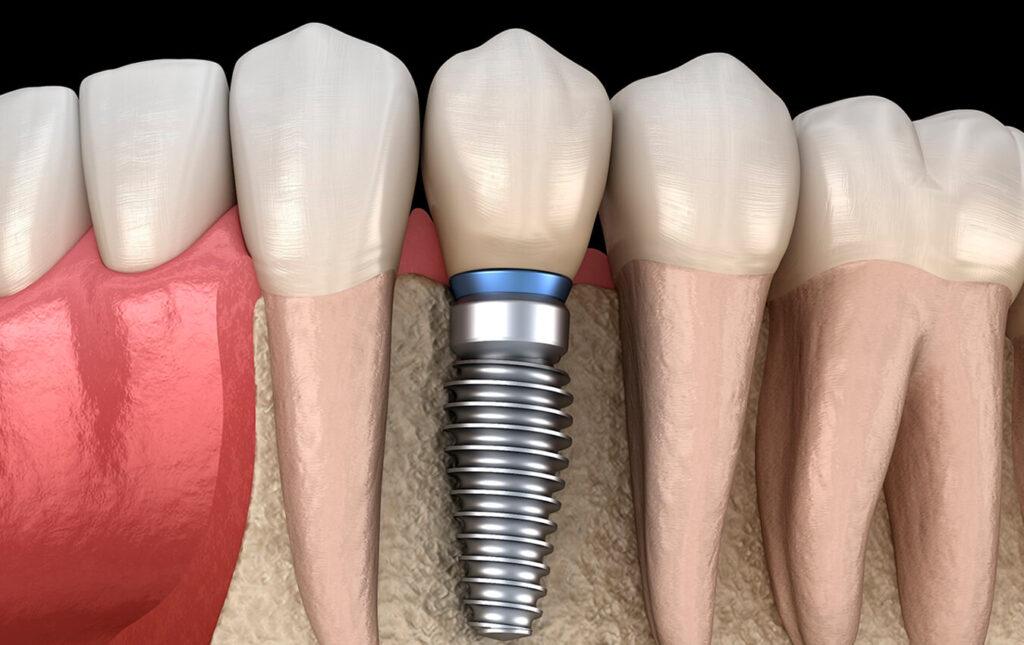
Most dental implants used on this purpose are made of titanium. Its main characteristics consist of the ability of protection against corrosion and resistance to acids. It is also a nonmagnetic metal which is strong enough despite its weigh, and the human body does not reject it as a foreign object. When titanium implants are successfully placed in bone, the bone develops around it in a process called osseointegration.
Implants are associated with many types of surfaces, such as acid etched, plasma sprayed, acid etched and grit blasted, and hydroxyapatite coated. Since hydroxyapatite is a part of the bone composition and it is also contained in the implant, it bonds with the bone in a process called biointegration.
There are several types of implants: root-form implants, ramus-frame implants, transosseous implants, blade-form implants and the dentist will decide which type to use according to the quality of the jawbone. Root-form implants are the most commonly used. They are placed in the bone and they can have the shape of screws, thick nails or cones, of different widths and lengths. Ramus-frame implants are preferred if the lower jawbone is too thin for an implant. The process consists of embedding this type of implant in the back corners of the mouth, near the wisdom teeth and the chin. Their advantages are that they can make steadfast jaws and help to prevent them from fracturing. The use of transosseous implants is very rare today and it is only applied to the lower jaw. The procedure consists of inserting two metal rods from below the chin, through the chin bone, until they display inside the mouth. Blade-form implants are an endosseous-like type of implant that looks like flat rectangles of metal with one or two metal prongs on one side.

